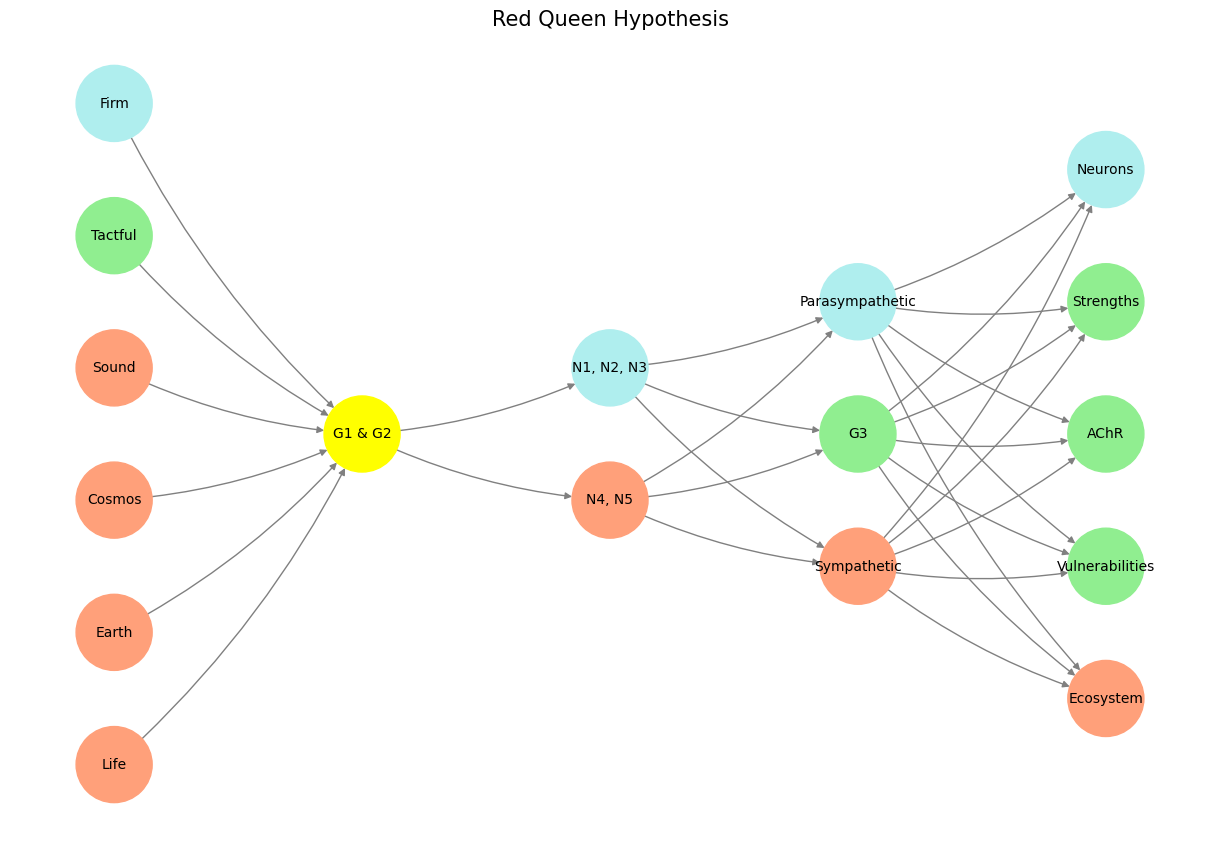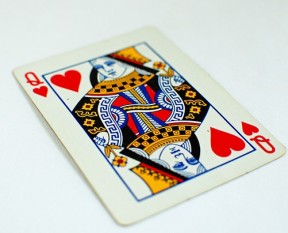System#
Restore Philosophy to Curricula#
A Synthesis Needed in 2024#
Generations upon generations of horse breeding embody a relentless race—an evolutionary arms race—against the Red Queen hypothesis. This metaphorical queen, drawn from Lewis Carroll’s Through the Looking-Glass, runs to stay in place, encapsulating the unyielding demand for adaptation in a competitive world. In horse racing, this is not merely a biological phenomenon but a tapestry woven with philosophy, art, and the dynamics of human ambition.
The Red Queen’s Race: Breeding for the Pinnacle#
Horse racing is a microcosm of iterative evolution, where breeders selectively refine genetics to produce animals capable of extraordinary feats. Each generation represents an equilibrium between biology and artifice, yet the process is inherently adversarial. A horse’s success on the track forces others to adapt, improving breeding techniques or facing obsolescence. Like the Red Queen’s endless race, there is no finish line—only the perpetual motion of improvement and refinement.
Philosophically, this mirrors the tensions found in Karl Marx’s critique of capital. Breeding reflects the alienation of labor, where horses are tools in a system striving for a standard of excellence that’s perpetually elusive. Yet, while Marx’s School of Resentment sees such systems as exploitative, Nietzsche’s School of Life might delight in the vitality and creative will driving this evolutionary process. Plato’s School of Athens, with its ideal forms, offers yet another lens—horses bred as living embodiments of idealized power and grace.
The Philosophical Jockeys: Athens, Resentment, and Transactions#
If the schools of thought were jockeys in this race, they would represent distinct strategies:
Athens (Plato): Plato’s School of Athens exalts the pursuit of ideal forms. In the world of horse racing, this translates to an almost divine quest for the perfect horse—a creature whose every sinew, stride, and breath aligns with an abstract ideal. Breeding here becomes an art of harmonizing the earthly with the celestial.
Resentment (Marx): Marx’s School of Resentment offers a critical perspective. The breeding of horses for racing could be viewed as an allegory for alienation: the animals’ natural existence is subordinated to the machinery of human ambition. The transactional nature of racing markets further commodifies the horse, reducing its essence to capitalized potential.
Transactions (Nietzsche): Nietzsche, however, finds joy in the flux and struggle. His School of Life celebrates the transactional dynamics of the racetrack—the daring wagers, the strategic maneuvers, and the embodiment of will to power. For Nietzsche, the racetrack is a playground for vitality and affirmation, where even losses feed the exuberance of existence.
The Schools of Art: Form and Motion#
The artistry of horse racing is not confined to the breeding stables; it unfolds in the kinetic poetry of the race itself. The Schools of Art mirror the philosophical schools:
Athens (Plato): The sculptural elegance of the horse in motion recalls the timeless ideals of ancient statuary. Each stride is a homage to harmony and balance.
Resentment (Marx): The grittier realities of the industry—the exploitation, the inequalities—manifest in the fractures of this ideal. Here lies the tension between beauty and labor, between the horse as art and the horse as utility.
Transactions (Nietzsche): The dynamic interplay of jockeys, odds, and spectators encapsulates Nietzschean drama. The racetrack is a Dionysian spectacle, celebrating unpredictability and the raw force of will.
Racing Against the Red Queen#
Ultimately, horse racing against the Red Queen is a metaphor for humanity’s broader struggle. Just as breeders strive to perfect the thoroughbred, humans constantly adapt—technologically, socially, and philosophically—to a world in flux. This iterative process is not solely adversarial; it is also a dance of cooperation and innovation, reflecting a Nietzschean delight in the act of striving itself.
The Red Queen’s race is not won by stopping to rest or lamenting the burden of competition. Instead, it is sustained by those who, like Nietzsche’s school, embrace the flux with audacity and creativity. In the end, horse racing is not merely a contest of speed but a profound expression of life’s perpetual motion—a testament to the enduring interplay between form, function, and the indomitable will to prevail.
Show code cell source
import numpy as np
import matplotlib.pyplot as plt
import networkx as nx
# Define the neural network structure
def define_layers():
return {
'Pre-Input': ['Life', 'Earth', 'Cosmos', 'Sound', 'Tactful', 'Firm'],
'Yellowstone': ['G1 & G2'],
'Input': ['N4, N5', 'N1, N2, N3'],
'Hidden': ['Sympathetic', 'G3', 'Parasympathetic'],
'Output': ['Ecosystem', 'Vulnerabilities', 'AChR', 'Strengths', 'Neurons']
}
# Assign colors to nodes
def assign_colors(node, layer):
if node == 'G1 & G2':
return 'yellow'
if layer == 'Pre-Input' and node in ['Tactful']:
return 'lightgreen'
if layer == 'Pre-Input' and node in ['Firm']:
return 'paleturquoise'
elif layer == 'Input' and node == 'N1, N2, N3':
return 'paleturquoise'
elif layer == 'Hidden':
if node == 'Parasympathetic':
return 'paleturquoise'
elif node == 'G3':
return 'lightgreen'
elif node == 'Sympathetic':
return 'lightsalmon'
elif layer == 'Output':
if node == 'Neurons':
return 'paleturquoise'
elif node in ['Strengths', 'AChR', 'Vulnerabilities']:
return 'lightgreen'
elif node == 'Ecosystem':
return 'lightsalmon'
return 'lightsalmon' # Default color
# Calculate positions for nodes
def calculate_positions(layer, center_x, offset):
layer_size = len(layer)
start_y = -(layer_size - 1) / 2 # Center the layer vertically
return [(center_x + offset, start_y + i) for i in range(layer_size)]
# Create and visualize the neural network graph
def visualize_nn():
layers = define_layers()
G = nx.DiGraph()
pos = {}
node_colors = []
center_x = 0 # Align nodes horizontally
# Add nodes and assign positions
for i, (layer_name, nodes) in enumerate(layers.items()):
y_positions = calculate_positions(nodes, center_x, offset=-len(layers) + i + 1)
for node, position in zip(nodes, y_positions):
G.add_node(node, layer=layer_name)
pos[node] = position
node_colors.append(assign_colors(node, layer_name))
# Add edges (without weights)
for layer_pair in [
('Pre-Input', 'Yellowstone'), ('Yellowstone', 'Input'), ('Input', 'Hidden'), ('Hidden', 'Output')
]:
source_layer, target_layer = layer_pair
for source in layers[source_layer]:
for target in layers[target_layer]:
G.add_edge(source, target)
# Draw the graph
plt.figure(figsize=(12, 8))
nx.draw(
G, pos, with_labels=True, node_color=node_colors, edge_color='gray',
node_size=3000, font_size=10, connectionstyle="arc3,rad=0.1"
)
plt.title("Red Queen Hypothesis", fontsize=15)
plt.show()
# Run the visualization
visualize_nn()

Reinventing the Wheel#
Whatever critical theory is, one suspects it was never a strategic “upstart crow” that “beautified itself in the feathers” of the patriarchy. For only then, with its “tiger’s heart wrapped in a player’s hide,” might it have been a more effective Red Queen, “supposing itself able to bombast out a blank verse as the best of the patriarchs.”
“Yes trust them not: for there is an upstart Crow, beautified with our feathers, that with his Tygers hart wrapt in a Players hyde, supposes he is as well able to bombast out a blanke verse as the best of you: and beeing an absolute Johannes fac totum, is in his owne conceit the onely Shake-scene in a countrey.”*
– Robert Greene
Alas, the patriarchy detected an invader—a “woke-mind virus”—and launched antiquated defense mechanisms to restore its bromarchal dominion. These mechanisms, steeped in nostalgia for a time when hierarchical structures were unchallenged, have culminated in a dramatic counter-offensive. On January 20, 2024, this bromarchy will presumably ride back into town, heralding a return to the old order.
Critical theory, for all its intellectual rigor, seems to have underestimated the deep reservoirs of reactionary fervor it would provoke. Like a naive Red Queen running faster to stay in place, it misjudged the strategic adaptability of its opponents. Instead of embedding itself as a vital component of systemic evolution, it became a perceived existential threat. Rather than a true tiger—agile, sharp, and uncontainable—it appeared as a player in costume, undermining its legitimacy in the eyes of its adversaries.
The patriarchy’s framing of critical theory as a “woke-mind virus” is emblematic of its ability to weaponize fear and nostalgia. By reducing a complex intellectual movement to a contagion, it taps into primal anxieties about purity and preservation. This strategy—effective, if not original—has galvanized a collective longing for a return to the familiar structures of dominance and subservience.
Yet, the image of the Red Queen offers a more profound metaphor for this cultural clash. In the evolutionary race, the Red Queen’s perpetual motion represents the necessity of constant adaptation to survive. Critical theory, despite its flaws, embodies this dynamism, challenging static hierarchies and fostering new ways of thinking. But without a clear strategy to counteract the bromarchy’s defenses, it risks being outpaced, relegated to the realm of noble but ineffectual ideals.
As January 20, 2024, approaches, one cannot help but wonder: Is this the return of the bromarchy, or merely a final act of defiance against an inevitable tide of change? The wheel of history, after all, does not spin backward without resistance. Perhaps critical theory’s role is not to reinvent the wheel but to reshape its axis, ensuring the perpetual motion of progress remains unbroken.

